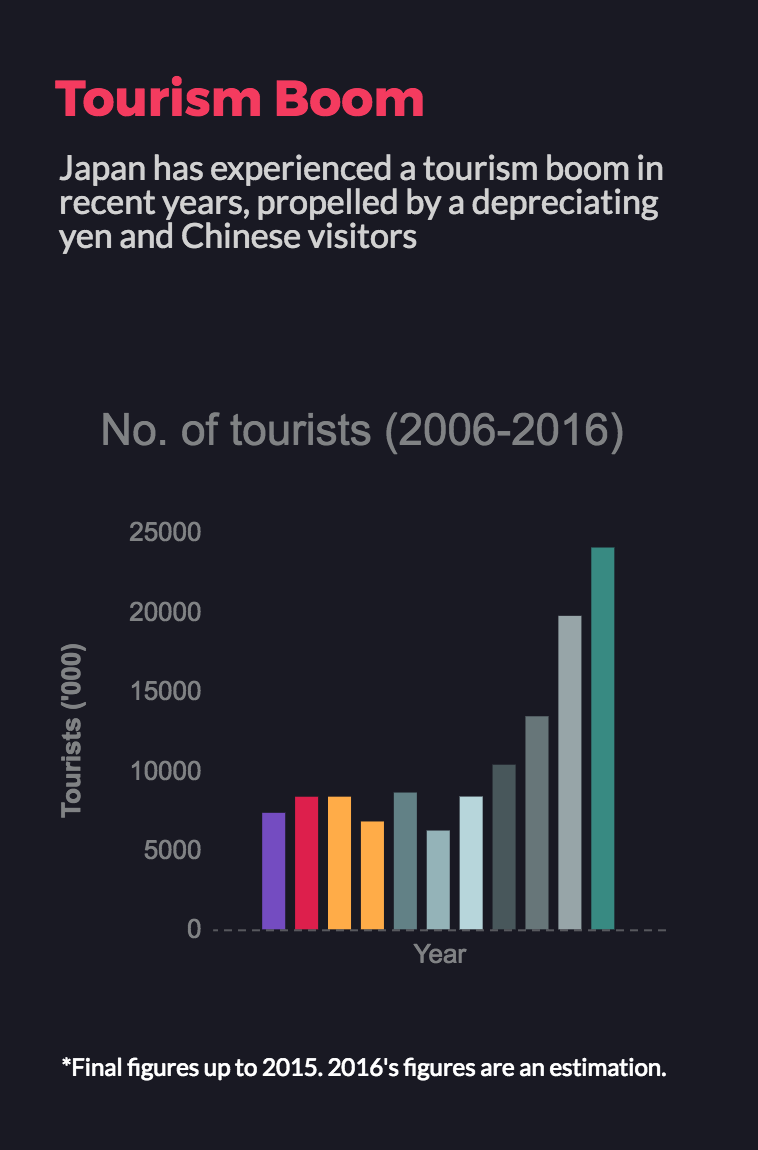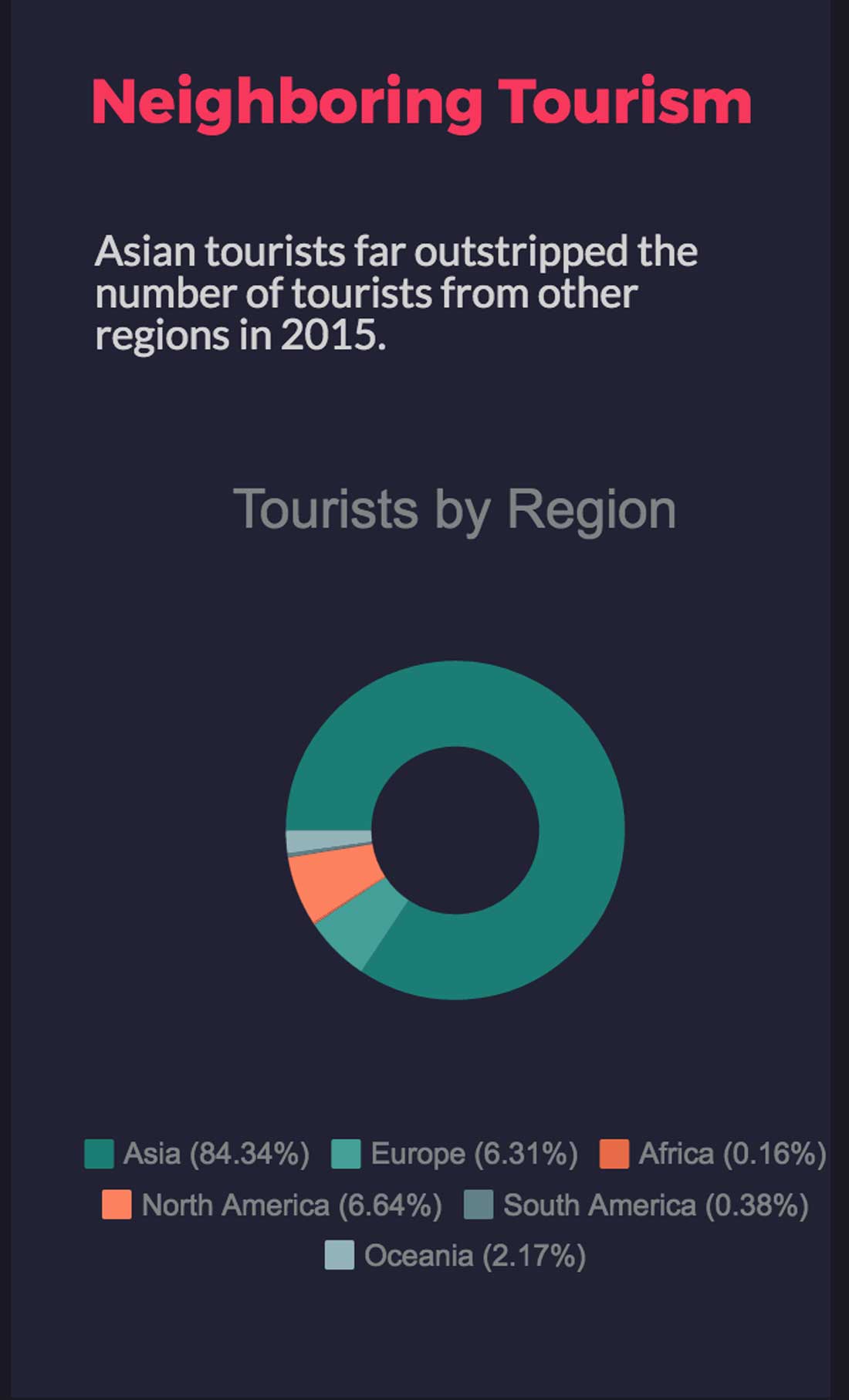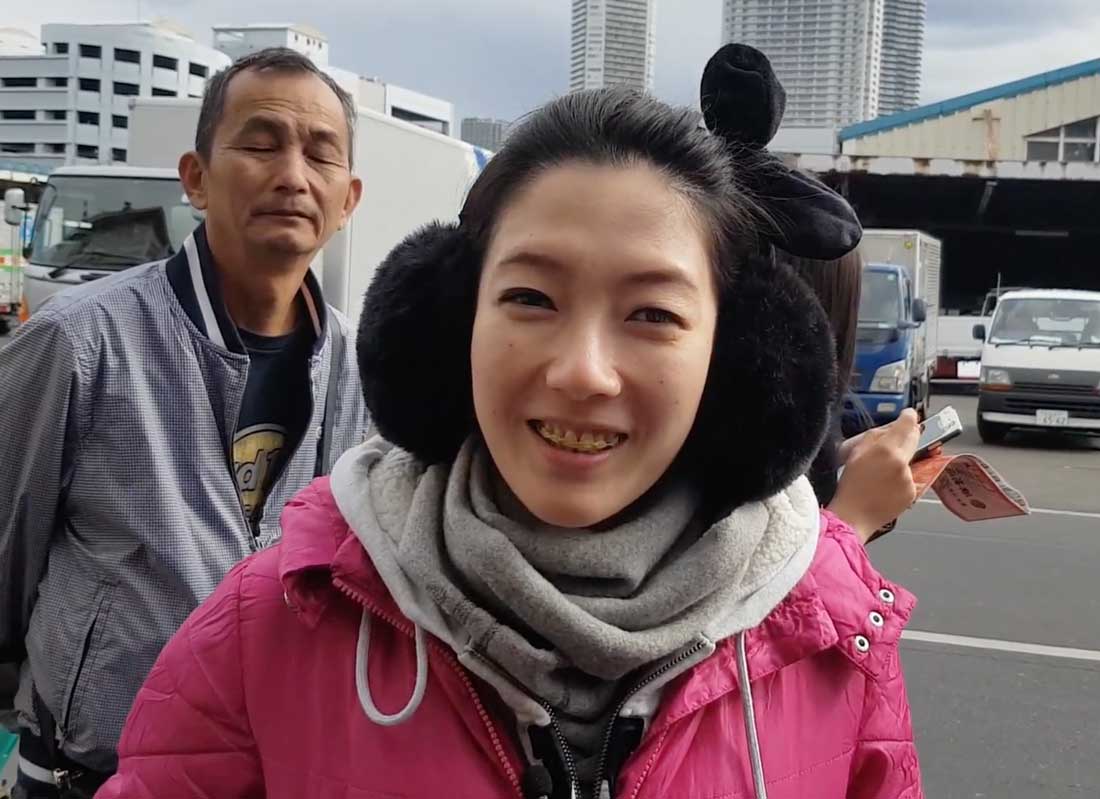By Mindy Tan
Tourism has emerged as a driving force in Japan’s economy and the government is banking on it to boost the world’s third largest economy.
In 2016, an estimated 24 million foreigners visited Japan, an increase of 21.8 percent over the 2015’s 19.7 million visitors, according to data from the Japan National Tourism Organization.
The number of people visiting Japan has increased by leaps and bounds since 2011. 2015’s figure is a 47 percent jump over 2014’s 13.4 million international visitors.
The surge in visitors was driven in large part by external factors, including the depreciation of the Japanese yen and China’s economic growth, according to a report from McKinsey Global Institute. Onetime policy changes (airline deregulation and the relaxation of visas for tourists from China, Malaysia and Thailand) has also made the country more accessible to visitors from neighboring countries.

Source: Japan National Tourism Organization
An estimated 6.37 million Chinese visitors toured Japan in 2016, an increase of 27.6 percent year-on-year from 4.99 million; this is the first nationality to exceed 6 million visitors across all markets, according to JTB Tourism Research and Consulting Co. This was followed by some 5 million South Korean visitors which represents an increase of 25 percent from 4.0 million; 4.2 million Taiwanese visitors, an increase of 13.5 percent from 3.7 million; and 1.8 million visitors from Hong Kong, an increase of 20 percent from 1.5 million.
In terms of final figures, Japan received a total of 16.6 million visitors from Asia in 2015. This far exceeded the 1.2 million visitors from Europe and the 1.3 million visitors from North America, 1.0 million of them from the U.S.

Source: Japan National Tourism Organization
Kary Ling is a first-time visitor from Hong Kong. She was standing in line at Sushi Dai, a popular restaurant at the Tsukiji Fish Market in Tokyo, and had just received confirmation that she secured a spot for the market’s popular tuna auction the next day.
“Usually when we travel we don’t wait in lines,” Ling said. “Two hours is just insane; it’s just that we are quite chill now. Everybody in Hong Kong, when they come to Japan, they know this is the must-go place.”
“Most of the Hong Kong people come here three or four times a year because flight tickets are very cheap.” For instance Jetstar, an Australian airline, charges U.S.$182.32 for the four-hour flight from Hong Kong to Tokyo.

A Chinese tourist, Liu Yanshan, said she likes to buy beauty products when she is in Japan as she likes the range of products and thinks they are “safer”.
“They are also cheap and cute,” she said. This is Liu’s second trip to Japan.
Japan’s leaders, recognizing the potential for tourism as a powerful economic engine, have set an aspirational target to double annual inbound tourism from 19.7 million visitors in 2015 to 40 million in 2020.
Notably, Tokyo is hosting the Olympic and Paralympic Games in 2020. The Tokyo Metropolitan Government said last week that it expects the games to create economic benefits totalling 32.3 trillion yen ($281.99 billion) between the years 2013 to 2030. Tokyo was chosen in 2013 for the 2020 games.
The Tokyo government also expects some 1.94 million jobs to be created nationwide.
In March last year, Japan’s Prime Minister Shinzo Abe held the second meeting of the “Council for the Development of a Tourism Vision to Support the Future of Japan” after which he announced that 10 reforms will be adopted. These include opening certain government facilities, such as the Akasaka Palace State Guest House and the Kyoto State Guest House for public viewing, establishing world-class national parks, and improving soft infrastructure such as providing smoother immigration procedures and promoting cashless tourism.
But the underlying issue faced by most tourists is the language barrier.
“If they can speak English it’s easier for us to travel around Japan,” said Phaan Tze Wei, from Singapore.
“And if they have cheaper hotel rates during winter, we can stay longer and bring more friends,” said Irene Loh.
They have been to Japan more than four times, mainly for winter activities that are outside of the main cities and where locals speak less English.
“In recent years, we have been coming here for snowboarding, and food and drinks,” said Loh. She said the “powdery snow” combined with the experience of eating ramen and the onsen, or Japanese hot springs, are reasons why they enjoy snowboarding in Japan.
Jonathan Soble, a foreign correspondent for The New York Times, says he gets daily pitches for the lead-up to 2020.
“Not a day goes by that a person from a public relations company or someone from the government doesn’t send something that links to 2020 … We are installing new English signage at this train station for 2020, so please get excited,” said Soble.


